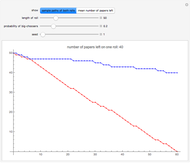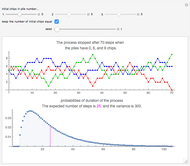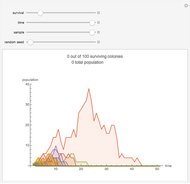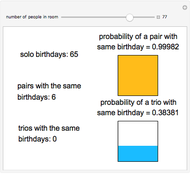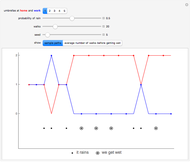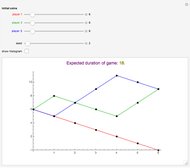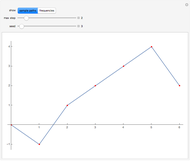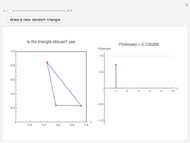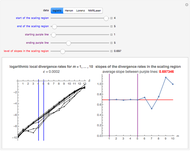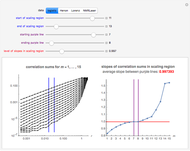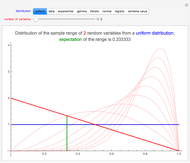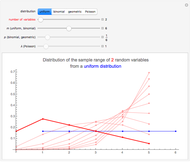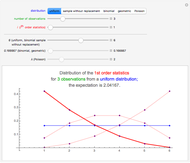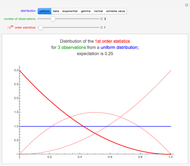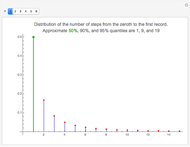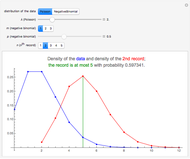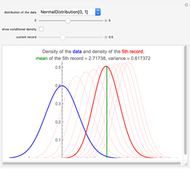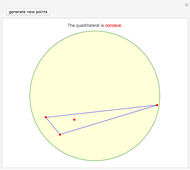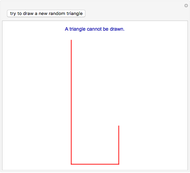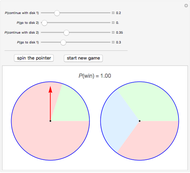Banach Matchbox Problem

Requires a Wolfram Notebook System
Interact on desktop, mobile and cloud with the free Wolfram Player or other Wolfram Language products.
A smoker has two matchboxes, one in the left pocket and one in the right pocket, with each box initially containing  matches. The smoker selects a box at random each time he lights a new cigarette, and the problem is to calculate the probability that, when the smoker first discovers that the box he has just selected is empty, there are exactly
matches. The smoker selects a box at random each time he lights a new cigarette, and the problem is to calculate the probability that, when the smoker first discovers that the box he has just selected is empty, there are exactly  matches in the other box (
matches in the other box ( ).
).
Contributed by: Heikki Ruskeepää (April 2012)
Open content licensed under CC BY-NC-SA
Snapshots
Details
Snapshot 1 illustrates the case that when the smoker finds a box empty, the other box may also be empty. On the other hand, the other box can also contain all the original  matches. In the second snapshot, where we originally have 40 matches in each box, the other box contains, at the end, 18 matches. The histogram in the third snapshot is based on 1000 simulations; the number of matches left in the other box varied from 0 to 23 when we originally had 40 matches.
matches. In the second snapshot, where we originally have 40 matches in each box, the other box contains, at the end, 18 matches. The histogram in the third snapshot is based on 1000 simulations; the number of matches left in the other box varied from 0 to 23 when we originally had 40 matches.
The fourth snapshot shows the exact probabilities of the number of matches in the other box at the end. We see that small numbers of matches in the other box have the highest probabilities. The two highest probabilities are for the cases where there are finally no matches or one match is in the other box; in addition, these two probabilities are equal.
Note that when the smoker takes the last match out of a box, he puts the box back into the pocket it came from, and he only becomes aware that the box is empty when he next selects that box.
According to Feller [1, p. 166], this problem was inspired by a humorous reference to Banach's (1892–1945) smoking habits made by H. Steinhaus in an address honoring Banach; see also problem 7 in [2].
Feller [1, p. 167] gives the exact probabilities of the number of matches left in the other box. In [1, p. 238] we can find the expected number of matches left in the other box.
References
[1] W. Feller, An Introduction to Probability Theory and Its Applications, Vol.1, 3rd ed., New York: Wiley, 1968.
[2] P. J. Nahin, Digital Dice: Computational Solutions to Practical Probability Problems, Princeton: Princeton University Press, 2008.
Permanent Citation
"Banach Matchbox Problem"
http://demonstrations.wolfram.com/BanachMatchboxProblem/
Wolfram Demonstrations Project
Published: April 16 2012







